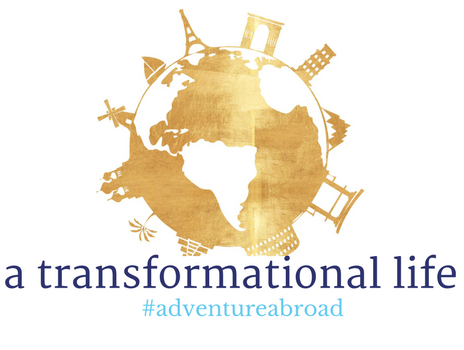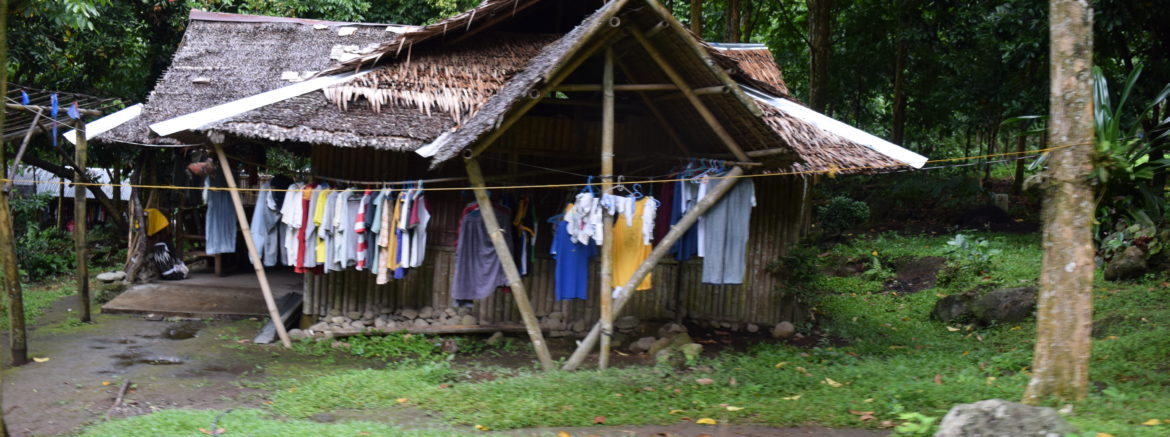This is part one of a three part series of life in the Philippines. This first installment will cover housing and transportation.
Life in the Philippines is quite different from anywhere we’ve lived or anything we’ve ever experienced. In six weeks we saw a variety of different living situations across several islands. Living in the Philippines can feel like living in the 1800’s, 1920’s, 1940’s, and 1990’s; it all depends on where you are. Today we will explore living in the Philippines and how we felt about the Filipino way of life.
Imagine yourself being taken back in time to a very simple way of life in terms of possessions, extra curricular activities, schooling, getting food, and small humble abodes that have the basic necessities of life. It is also a time of lots of hard work to keep the household running, having enough to eat, and finding or keeping a job. This would be the Philippines.
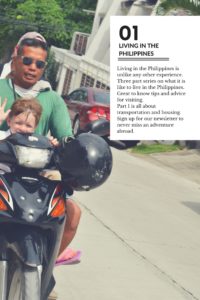
TRANSPORTATION
The Philippines has a rich history of Spaniard rule, then Japanese and American rule, until the Philippines declared itself a Republic and today it governs itself. In the 1940’s there was a large American military presence and the Filipinos still use the vehicles form WWII as their most popular mode of transportation; they call them Jeepneys. They have painted them bright, fun colors and some are really decorated. There are no formal bus stops you just flag one down and hop on wherever you are. Be prepared to squeeze in tight and enjoy the next few minutes closest to a stranger than you ever thought you would be. Some jeeps are small unlike the WWII vehicles. These are also painted bright colors and operate differently depending on the area you are in. They are around Php8-12/pax depending on how far you are going and a convenient way to get around town.
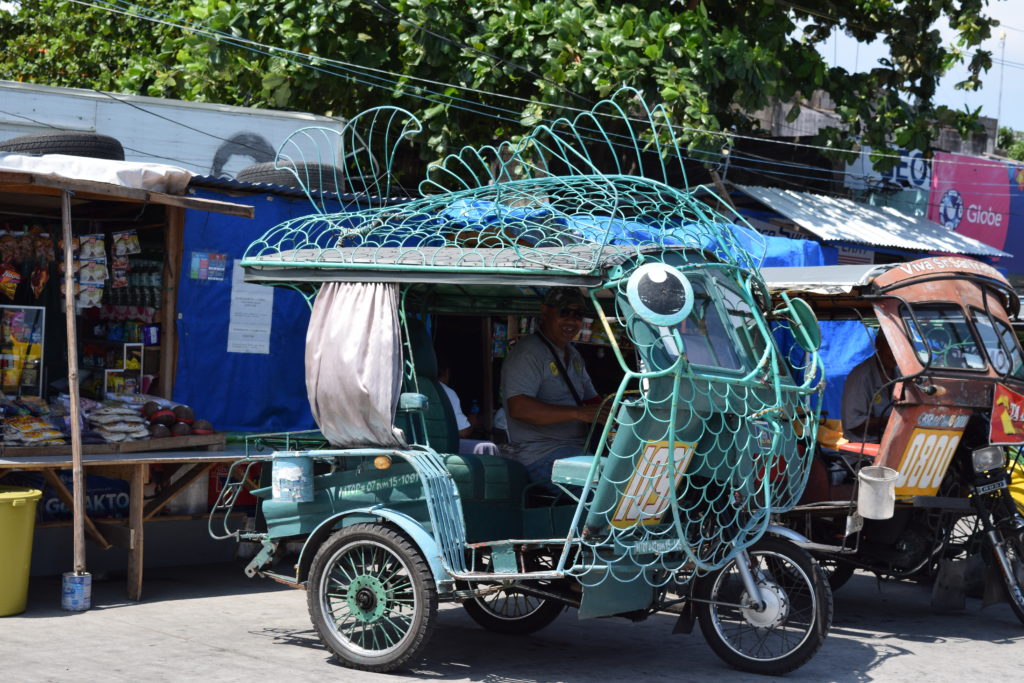
Tricycles are another popular form of transportation in most areas of the Philippines. Some areas have more tricycles than people…it seems like! Tricycles are also around Php10/pax again depending on how far you are traveling. Be on the lookout for some really fun tricycles. It is also fun to see how the look of the tricycles change from one city to the next and from one island to the next. They have all different styles of these fun modes of transportation. Claire and Averi would rush to get the seat on the back of the motorcycle. That was their favorite spot on the tricycle. Jake and I also took turns on the motorcycle seat, but it’s not as comfortable for us because of our height. Generally the children sit with their backs facing the front of the tricycle and the adults face the front on the larger seat. Some tricycles have back cargo areas, depending on the area you are in, for more passengers. These tricycles can hold a lot of people in some areas-up to 10!
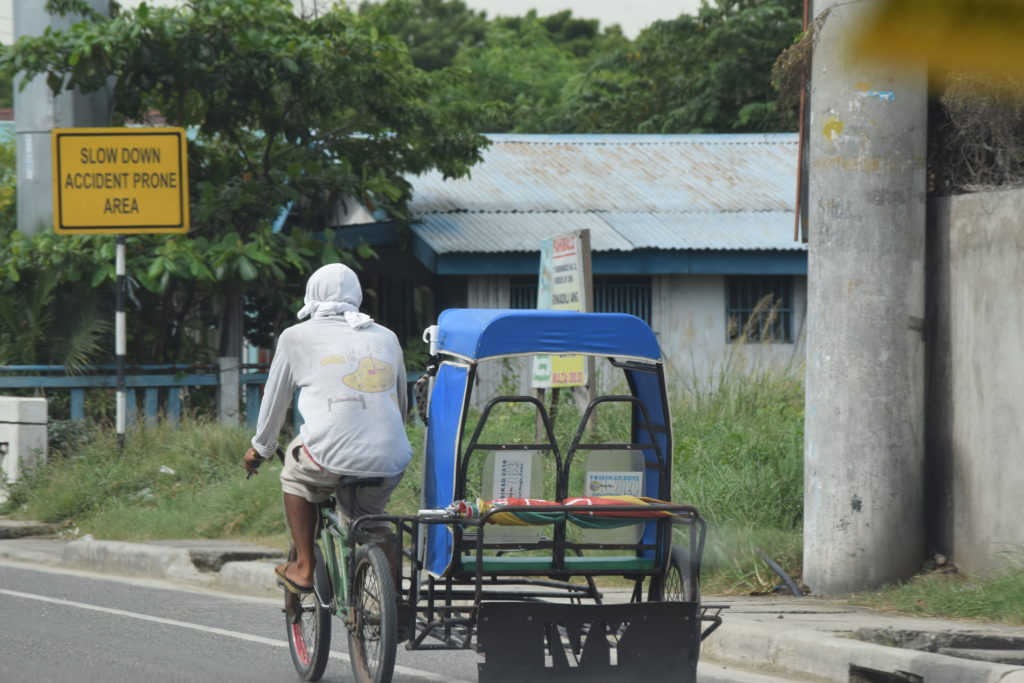
Pedi-cabs are more popular in the smaller towns in the Philippines, though you do see them in the cities as well. Pedi-cabs are like tricycles, but have a pedal bike instead of a motorcycle to operate the tricycle. Those pedi-cab drivers are tough! It cannot be easy biking people in the heat and humidity on the roads. My hat goes off to these hard workers.
Motorcycles are the most popular mode of transportation for the locals. Motorcycles are everywhere and they are very noisy. The Philippines is not a quiet country, but you get used to it. Coming from America where most states have made a law to wear a helmet, in in the Philippines it is a rain hat. The helmets only come out when it begins to rain. Another common use is for the small children to sit on as a booster seat in the front area of the motorcycle. Tage experienced that first hand. To get to some areas of interest you will need to take a motorcycle because that is the only vehicle they allow to that area. It is really fun to get around on a motorcycle.
Taxis are more common in the very large cities like Manila and Cebu. We rode many taxis in Cebu and for the most part had good experiences. We crammed our family into the back of the car; sometimes we were crammed in the back for a couple of hours. Like many uncomfortable situations, it brought us closer together. When using the taxis make sure you ask them to run the meter. Most drivers are not going to take advantage of the tourist, but some will. If the driver asked us “How much?”, which is common, we just asked them to kindly turn on the meter. One other piece of advice is to watch out for the driver wanting to charge you extra for luggage. We had this happen to us one time, we refused to pay extra for putting our belongings in the trunk and only paid the meter price. Those situations make me feel so uncomfortable. Uber is available in the large cities as well and is a cheaper option than the taxis. We only used Uber once because we didn’t load our phone with a local number or data, but you will save money and the haggle with Uber.
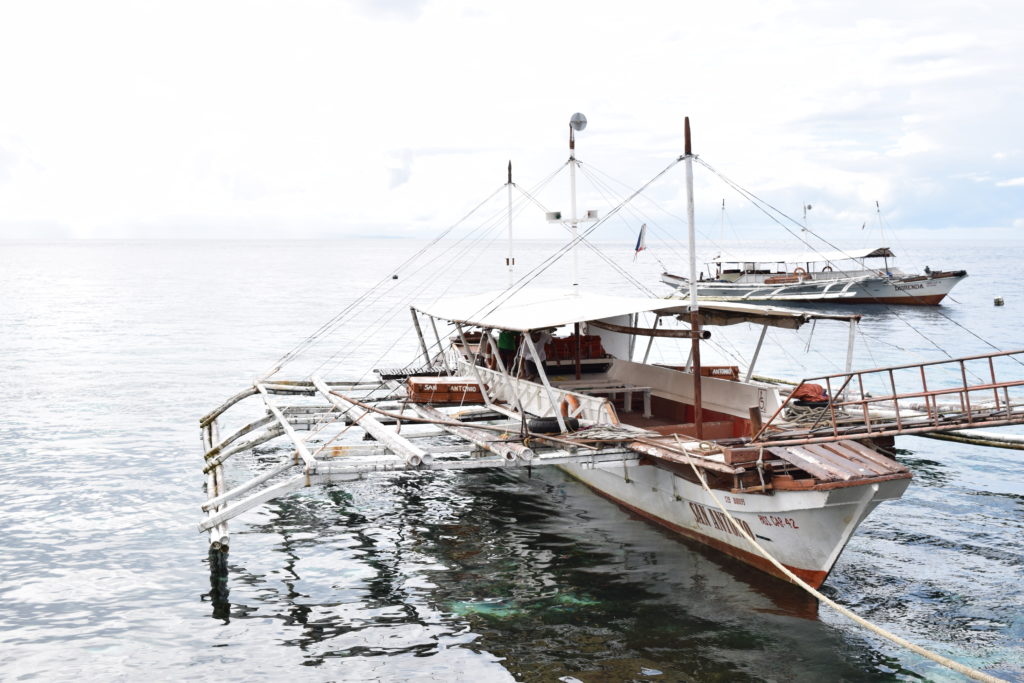
Boat is a great way to get from island to island for not much money. There are a few options with the boats: air conditioning, upper level in the air, and first class. Our longest boat rides lated two hours. They were on island hopper boats or large RORO ships. I have a severe anxiety of being on ocean water in large boats and I survived. It’s not my favorite, but it’s not horrible for two hours. We also took a few pump boats and they were really fun. Pump boats are those boats you see the Survivor cast coming in to the island on sometimes. I actually prefer these over those large boats-for the short distances we took them. These are common in island hopping excursions, which I highly recommend doing.
Bus is another option for long distances. We took one bus for a three hour ride. It’s not as inexpensive as you would think, but it’s less than a plane ticket. It depends on how far you are going as well. The bus is somewhat unpredictable in that they will fill the bus until it can’t be filled anymore. So depending on where you get on (you can flag them down and hop on where you are) you may or may not have a seat. There are aircon buses and there are non-aircon buses: go with the aircon.
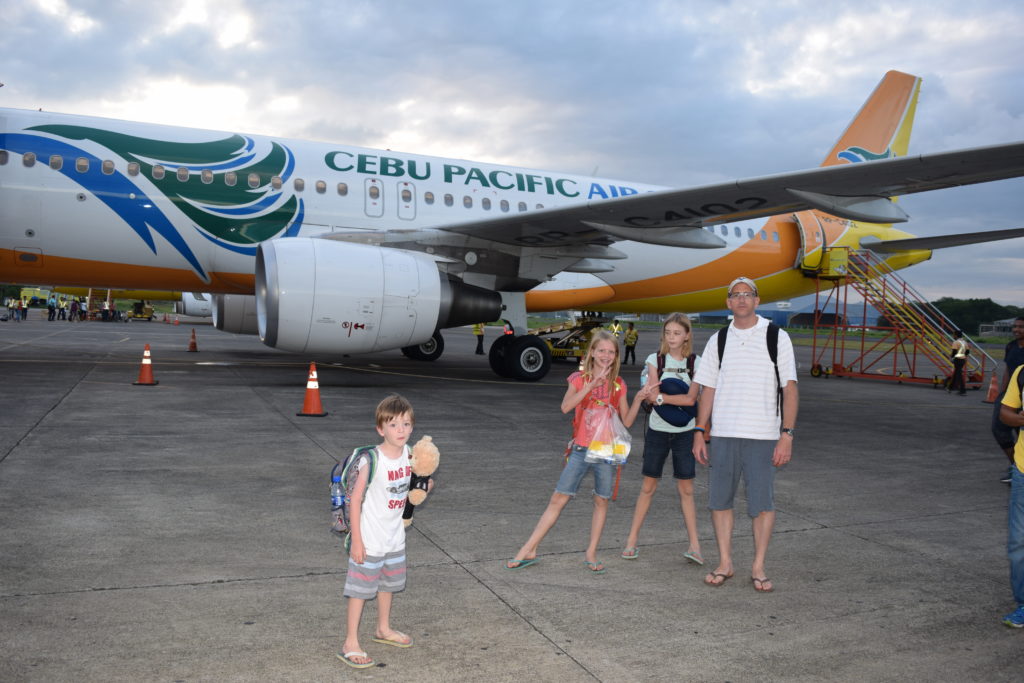
The last mode of transportation is by airplane. A lot of the main islands have at least a small airport to fly into. You may have to take a combination of boat and airplane and bus to get to an island or a certain part of an island you are trying to see. If there is one thing I have learned, it is that getting from one place to another in the Philippines is an adventure in itself. It takes a long time to get around the country. It is so worth it for the beauty you will see and the experiences you will have.
HOUSING
Houses and dwelling structures are built with plywood, bamboo, corrugated tin, and nepa leaves. From what I can tell, it is built piecing it together without any specific plans. They use hand tools and other primitive methods of cutting bamboo and wood. They do have welding machines as well for metal work. That is a scary process to watch because they do not have the safety equipment you normally see welders using. Some houses have dirt floors, some cement, in the more modern places tile floors are installed. The modern homes are built out of cinder blocks. Many homes are built up off of the ground. Near coastal areas where the tide goes in and out this is a necessity. Some places have water from the sink run down below the house. Kitchens are usually outside the home, but some are inside as well.
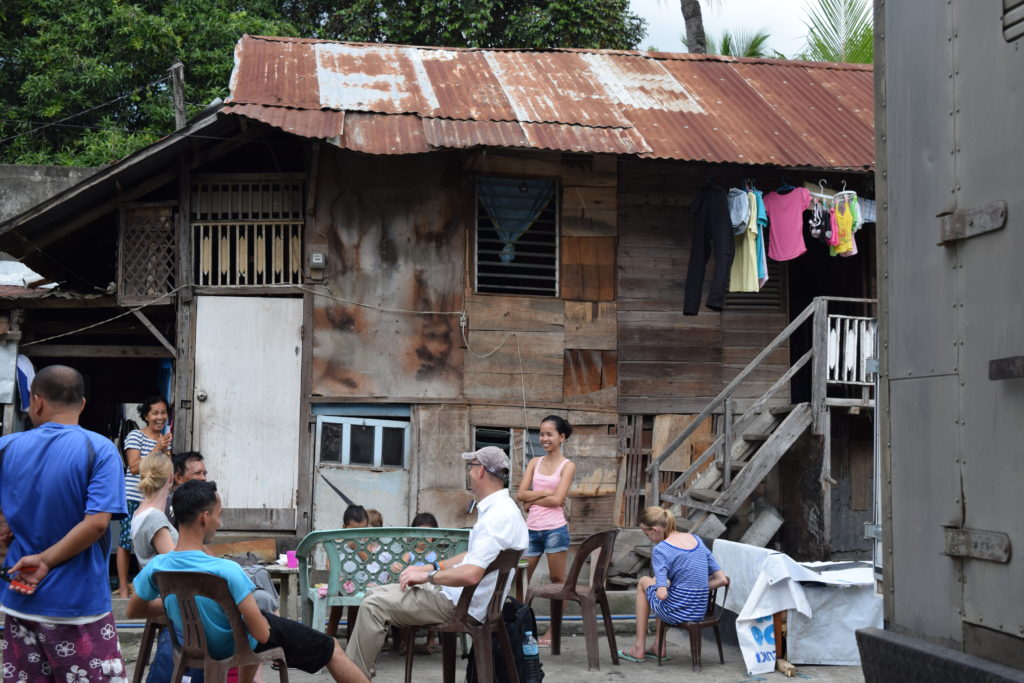
The houses themselves are small and simple: a sink with no hot/cold water option only what comes out of the faucet, a small fridge, an electric hot plate or propane stove is used to cook on. There are still many who cook over fire as well on charcoal made from coconuts. Bathrooms can be inside or outside depending on the area. More modern homes will, of course, have bathrooms on the inside. In the nepa hut homes there is probably a main living area and a sleeping area. Generations of families live together under one roof, it can get crowded.
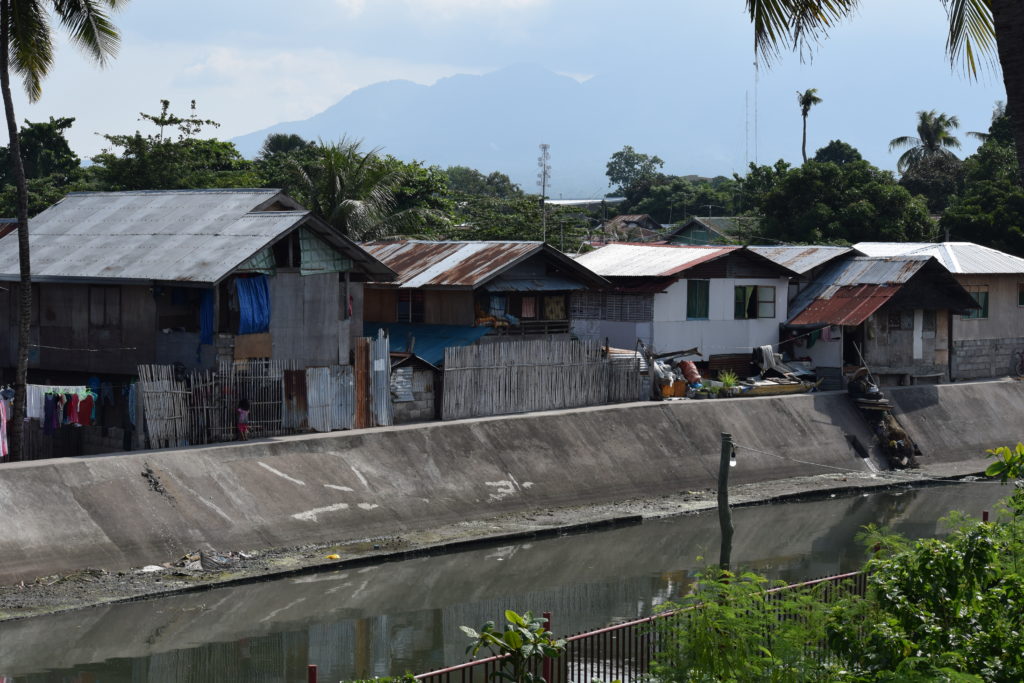
Houses are built either in rows or around a basketball court in the small barangays or neighborhoods. The children all play together and know each other. They will also go to school together. Basketball games bring a neighborhood together as well as fiestas. Many of the homes will have a store front; a sari sari store, where you can buy snacks of various kinds, cigarettes, sometimes shampoo, body soap, laundry soap, ice candy, soda, drink mixes, and some even make food from their kitchen to sell on their front porch. You do not have to go far to find a sari sari. This is what my children absolutely loved about visiting this country. Where we stayed in Dumaguete there were several sari sari stores to purchase different treats from. Each place generally has the same prices so you don’t need to shop around, just choose the nearest shop.
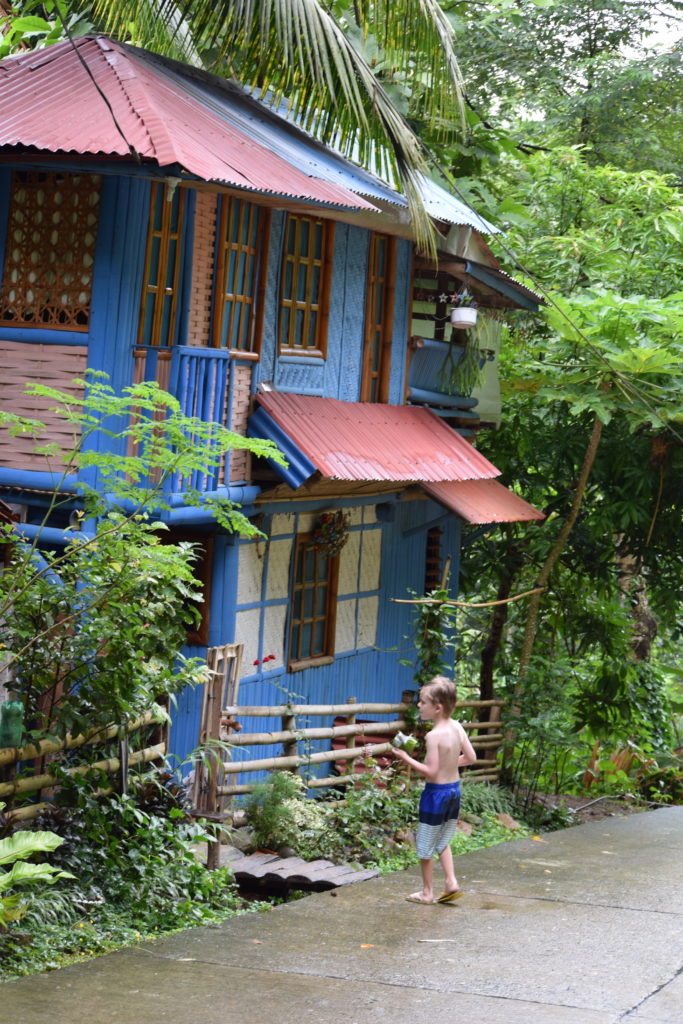
Some neighborhoods look like the homes are built on top of each other in a labyrinth of wood, metal, and bamboo. It is just incredible to see. Water comes from the well and water is filled in large containers on the top of towers that is then used for bathing, dishes, and cleaning. Bathing is done outside with a bucket or in more modern homes showers are built inside. Some of the homes will even have an electric heater to take a warmer shower. Lizards and spiders are common house guests. I love to see the houses here. They are incredible to see and think about the people that live in them. What memories are within those walls. The homes look different from what we are used to, but they still house families that live and love and work together.
Life in the Philippines is a mixture of laid back lifestyle and hard, back breaking work to keep everything functioning and working orderly. It is such a unique experience and we are so glad to have experienced it. Part two of Life in the Philippines will be about their food, where to shop for food, places to eat while you are there, and if it is safe to eat street food. Everyone likes food and you shouldn’t miss part two- that’s my invitation to sign up for the newsletter so you won’t miss out.
Adventure on!
